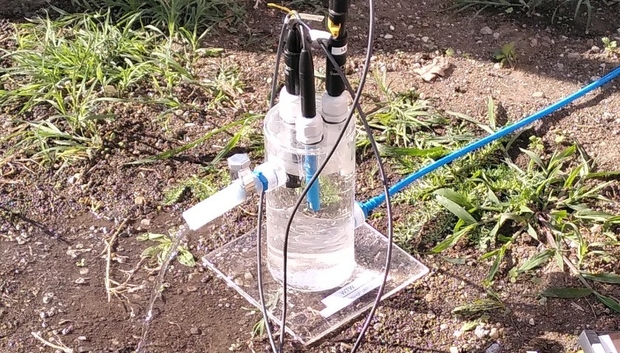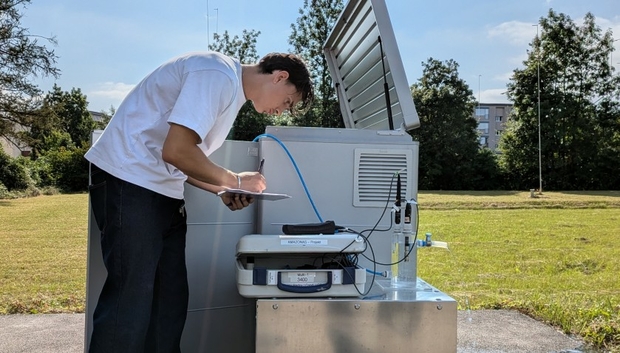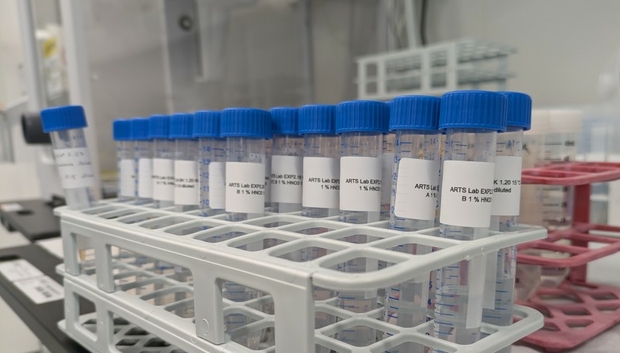Groundwater chemistry
Changes in the water chemistry belong to some of the main effects expected from the cyclic heating of the aquifer resulting from the operation of the energy storage facility. Temperature controls several physical properties of water, such as density and solubility, and it regulates both the dissolution and precipitation of metals and the occurrence of biological processes. As a consequence, the concentration of certain ions in dissolution and the bioavailability of nutrients within the aquifer might be enhanced or compromised, depending on the temperature gradient induced in the subsoil.
To assess these changes, we periodically collect water samples from different depths at each one of the three observation boreholes. These are then analyzed to measure the concentration of inorganic compounds, with a main focus on major ions, macronutrients (nitrogen, phosphorus, potassium, and sulfur), and trace metals. In addition, properties such as electrical conductivity, pH, redox potential, and dissolved organic carbon, are also analyzed.
Photos: Numa Pfenninger, Eawag







